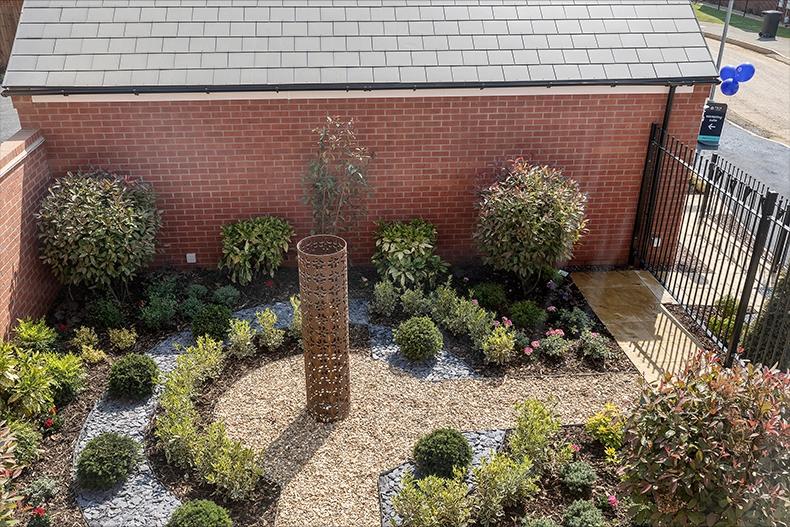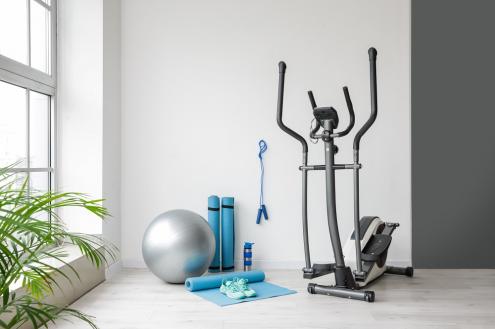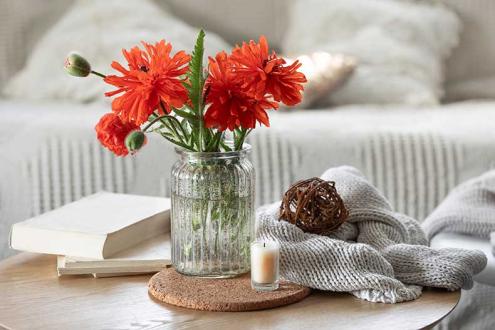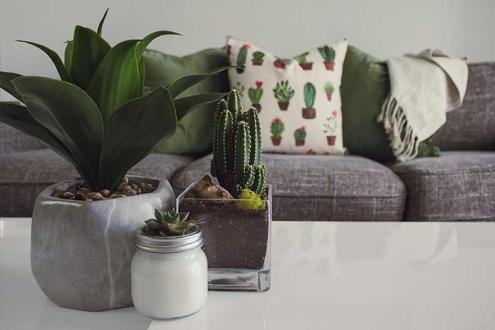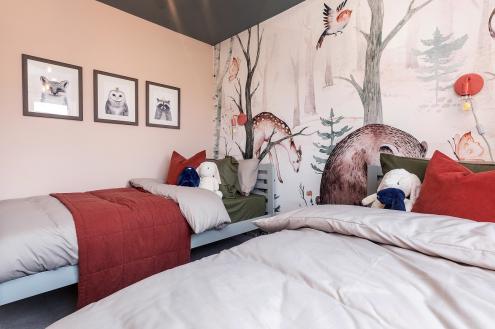19 December 2022
Creating your outdoor haven: new build garden ideas
Step-by-step top tips for turning your versatile new build garden into your dream outdoor space, with quick and easy DIY tips and budget busters to save money
We joined up with Bev Rodway-Smith, of landscapers Benchmark, to get her top tips for new build garden ideas, as well as the best budget busters for those new to gardening.
The past couple of years have seen a shift in the number of younger people spending more time and money enjoying outdoor spaces, on average investing double that of the rest of the population, with many attributing getting outside to lower levels of stress and anxiety.
One of the advantages that buying a new build home offers to young, green-fingered homeowners is the clear and empty space you’re provided with when you move in. Creating your own garden from scratch is exciting, if not a little daunting; so make sure to spend time planning and thinking about how you and your household want to use the space. This will ensure you end up with a garden that meets your needs
Create a moodboard to agree your style
The style and aesthetic of your garden is the part of the planning process that will probably take the longest – especially if members of your household have differing opinions. Spend some time before making any big purchases to create a moodboard, collecting photos or magazine cut-outs of the garden features, plants and furniture that you like and complement the look you want to achieve.
Popular at the moment is the ‘Cottagecore’ style garden, emulating the natural and mature aesthetic of an old English country garden, as well as inspiration which has come from further afield such as Japan and the Mediterranean – offering a slightly more organised design with clean lines and spaces.
When you have agreed on your new garden design, it’s time to start putting plans in place.
Think about function and maintenance
It’s important that as well as looking the part, your new build garden performs the function you really need it to serve. For example, if you regularly entertain family and friends, an on-trend indoor/outdoor garden may just be perfect for you. This can be easily achieved with clear glass French doors – which generally come as standard in a new build home – as well as incorporating the same flooring indoor and out, clever garden lighting, soft furnishings like scatter cushions and outdoor rugs, and using plants both in the garden and in the home.
Alternatively, with sustainable living continuing to be a priority for many young buyers, you may want your garden to serve as an extension of your kitchen by using it to grow fruit and vegetables, and perhaps even keep chickens. More and more, we’re now also seeing a rise in wildlife-friendly gardens, which encourage biodiversity via bugs, bees and birds being welcomed into the space.
Consider how much time you’ll have to take care of your garden too, and whether a low maintenance design would better suit your lifestyle. Once you’ve decided on the function of your new outdoor space you can begin to think about style.
Decide what goes where
Draw a plan with the measurements of your garden, using graph paper if possible to get the dimensions to scale. Make a list of the most important features you want to include and locate them on the plan.
Consider the shape of your garden too, any dead or awkward spaces, and the view of the garden from different rooms in the house. Pay attention to the aspect of your garden – i.e. is it north, south, east or west facing – as this may dictate where you’ll plot certain areas. Read on to find out more about what plants to use in your garden.
Pergolas are extremely popular and can be attached to your home over a patio. They can create a lovely seating area for welcoming visitors; you can dress this up with an interesting paint colour, climbing plants such as sweet peas or jasmine, and a complementary rug.
The darker corners of your garden however are perfect for a storage box, shed or compost bin, which can be tucked away in the furthest point from your home.
Perfect the planting
Much like in home interiors, in outdoor landscaping we too pay attention to the rule of three (or at least odd numbers). Therefore, make sure to plant trees in groups of three or five - individual plants may seem appealing but they don’t have the impact of a group of the same species. A cluster of trees together can also help to enhance privacy.
Use evergreen plants with interesting foliage to keep your garden looking good throughout the year. Flowering plants are lovely but also consider the different colours and shapes of leaves. You can add plants that provide flowers, fragrance and fruit in different seasons – and this will also help to provide seasonal interest and ensure you always have something new to see in your outdoor space.
When you first buy a home, knowing what plants can go where is crucial, as you don’t want to spend time and effort planting a flower in the wrong place!
Whether sunny or shady, there are a wide variety of low-maintenance plants to choose from. Shady spots can provide the perfect home for plants, with the likes of Fuchsia, Begonia and Bleeding Hearts enjoying a plot without direct sunlight. Similarly, vegetables such as leafy greens, herbs, peas and beans can thrive in the shade, so could be planted near to the house – further bringing the kitchen out into the garden, and vice versa.
If you’re planting in sunny spots consider Coneflower, Marigolds or Verbena – the latter smelling exquisite and loved by wildlife too.
Decide on your budget… and stick to it!
Now more than ever, homeowners (and first-time buyers especially) are looking for low-cost ways to achieve their dream new build garden transformation. The cost-of-living crisis and increased mortgage repayments often means buyers have less disposable income to invest in their property – but that’s what’s great about a new build garden: you have a versatile yet ready-made garden which you can slowly add to, as and when you’re able.
The best ways to ensure you stick to your budget when creating your new outdoor space, includes:
• Start from seeds when it comes to planting – this will be cheaper than spending on seedlings or plants, but you will need some patience before you reap the rewards of your hard work
• Make your own compost using fruit and veg scraps and peelings, grass clippings, dead leaves, sticks and shredded paper. Some councils even offer discounted rates on compost bins so carry out research before you buy at full price
• Create your moodboard virtually so you don’t need to invest in expensive glossy magazines – this can be done so easily on Pinterest or Instagram
• Buy second hand – this applies to gardening tools and furniture. The rise in popularity of eBay, Gumtree and Facebook Marketplace means it’s never been easier to find second hand goods at a range of prices. You might even be able to find a local Freecycle Group, or a neighbour who’s willing to trade items
• Do It Yourself – before you turn to local contractors to work on your garden, look first to see if you or a family member could learn to do it yourself. It could be anything from laying new turf or creating a raised bed from sleepers, you may be capable of anything you put your mind to
For more inspiration on your new build garden design and to see the range of possibilities when turning your empty space into your dream outdoor haven, visit the professionally-designed gardens at your local Tilia Homes developments.
